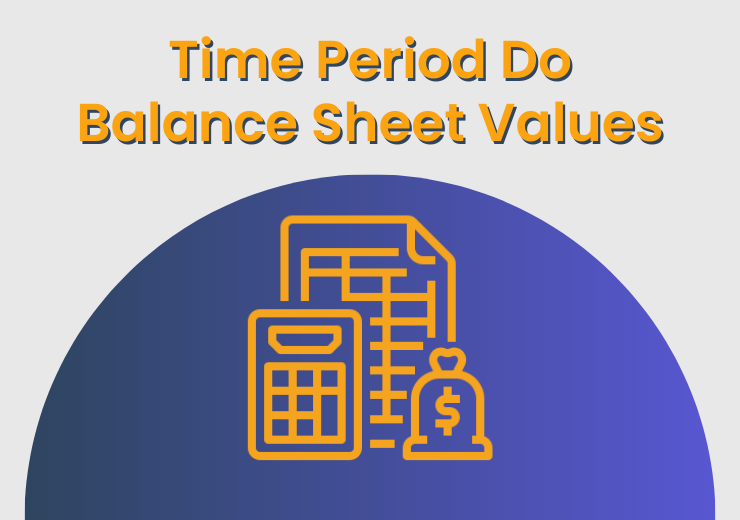Understanding the time period from which balance sheet values are derived is crucial for anyone involved in financial analysis or business management. The balance sheet is one of the fundamental financial statements, providing a snapshot of a company’s financial position at a specific point in time. Let’s dive deep into what this means and how it affects financial reporting and analysis.
What is a Balance Sheet?
A balance sheet, also known as a statement of financial position, is a financial statement that provides a snapshot of a company’s assets, liabilities, and shareholders’ equity at a specific point in time. Its primary purpose is to give stakeholders an idea of the company’s financial health and stability.
Components of a Balance Sheet
- Assets: Resources owned by the company, such as cash, inventory, and property.
- Liabilities: Obligations the company owes to others, like loans and accounts payable.
- Shareholders’ Equity: The residual interest in the assets of the company after deducting liabilities, including common stock and retained earnings.
The Time Frame of Balance Sheet Values
A balance sheet is distinct from other financial statements because it represents a point-in-time snapshot of a company’s financial position. Unlike the income or cash flow statements, which cover a period (e.g., a month, quarter, or year), the balance sheet is as of a specific date. This is often referred to as the “reporting date” or “balance sheet date.”
Historical Cost vs. Fair Value
Historical Cost
Historical cost refers to the original purchase price of an asset. Many assets on the balance sheet are reported at historical cost, meaning they are recorded based on the price at the time of acquisition, minus any depreciation or amortization.
Fair Value
Fair value is the price that would be received to sell an asset or paid to transfer a liability in an orderly transaction between market participants. Some assets and liabilities, especially financial instruments, are reported at fair value.
Reporting Periods
Companies prepare balance sheets at regular intervals, depending on their reporting requirements. Common reporting periods include annual, quarterly, and monthly reports.
Fiscal Year-End Reporting
The fiscal year-end is a significant date for businesses as it marks the end of their financial year. Companies choose their fiscal year-end based on operational cycles, tax considerations, and industry standards. For example, a company may have a fiscal year ending on December 31 or June 30.
Interim Reporting
Interim reports are prepared for periods shorter than a fiscal year, such as quarterly or monthly reports. These interim balance sheets help stakeholders track a company’s financial performance more frequently.
Adjustments and Estimates
The values reported on a balance sheet often involve estimates and adjustments to reflect the most accurate financial position.
Depreciation and Amortization
These are methods used to allocate the cost of tangible and intangible assets over their useful lives. Depreciation impacts the value of physical assets like machinery, while amortization affects intangible assets like patents.
Allowance for Doubtful Accounts
This is an estimate of the amount of receivables that may not be collected. It impacts the net value of accounts receivable on the balance sheet.
Consolidated Balance Sheets
Consolidated balance sheets combine the financial positions of a parent company and its subsidiaries into a single statement. This provides a comprehensive view of the entire group’s financial health. The reporting date for a consolidated balance sheet is typically the same as the parent company’s balance sheet date.
Comparative Balance Sheets
Comparative balance sheets present financial information for multiple periods side-by-side, allowing for easier comparison and analysis. They help identify trends and changes in financial position over time.
The Impact of External Factors
External factors such as market conditions, economic events, inflation, and exchange rates can significantly impact the values reported on a balance sheet.
Inflation and Exchange Rates
Inflation can erode the purchasing power of money, affecting asset values. Exchange rates impact the value of foreign currency-denominated assets and liabilities. Companies use various methods to account for these factors, such as revaluation and foreign currency translation.
Balance Sheet Analysis Over Time
Analyzing balance sheets over multiple periods can reveal trends and patterns, helping stakeholders make informed decisions. Tools like ratio analysis and trend analysis are commonly used to evaluate financial performance and position.
Conclusion
Understanding the time period that balance sheet values come from is essential for accurate financial analysis and decision-making. The balance sheet provides a point-in-time snapshot, reflecting the financial position as of a specific date. By considering historical cost, fair value, and the impact of external factors, stakeholders can gain a comprehensive view of a company’s financial health.
FAQs
-
What is the difference between a balance sheet and an income statement?
The balance sheet provides a snapshot of a company’s financial position at a specific point in time, while the income statement shows the company’s financial performance over a period of time, including revenues, expenses, and profits.
-
How often should a business prepare a balance sheet?
Businesses typically prepare balance sheets annually, quarterly, and sometimes monthly, depending on their reporting requirements and management needs.
-
Why are estimates used in balance sheet preparation?
Estimates are used to provide the most accurate representation of financial position, accounting for factors like depreciation, amortization, and potential uncollectible receivables.
-
What is the impact of market conditions on balance sheet values?
Market conditions can affect the fair value of assets and liabilities, influencing the overall financial position reported on the balance sheet.
-
How can I use balance sheet analysis to make better business decisions?
By analyzing trends and ratios from balance sheets over time, you can identify strengths, weaknesses, and areas for improvement, aiding in strategic planning and decision-making.

